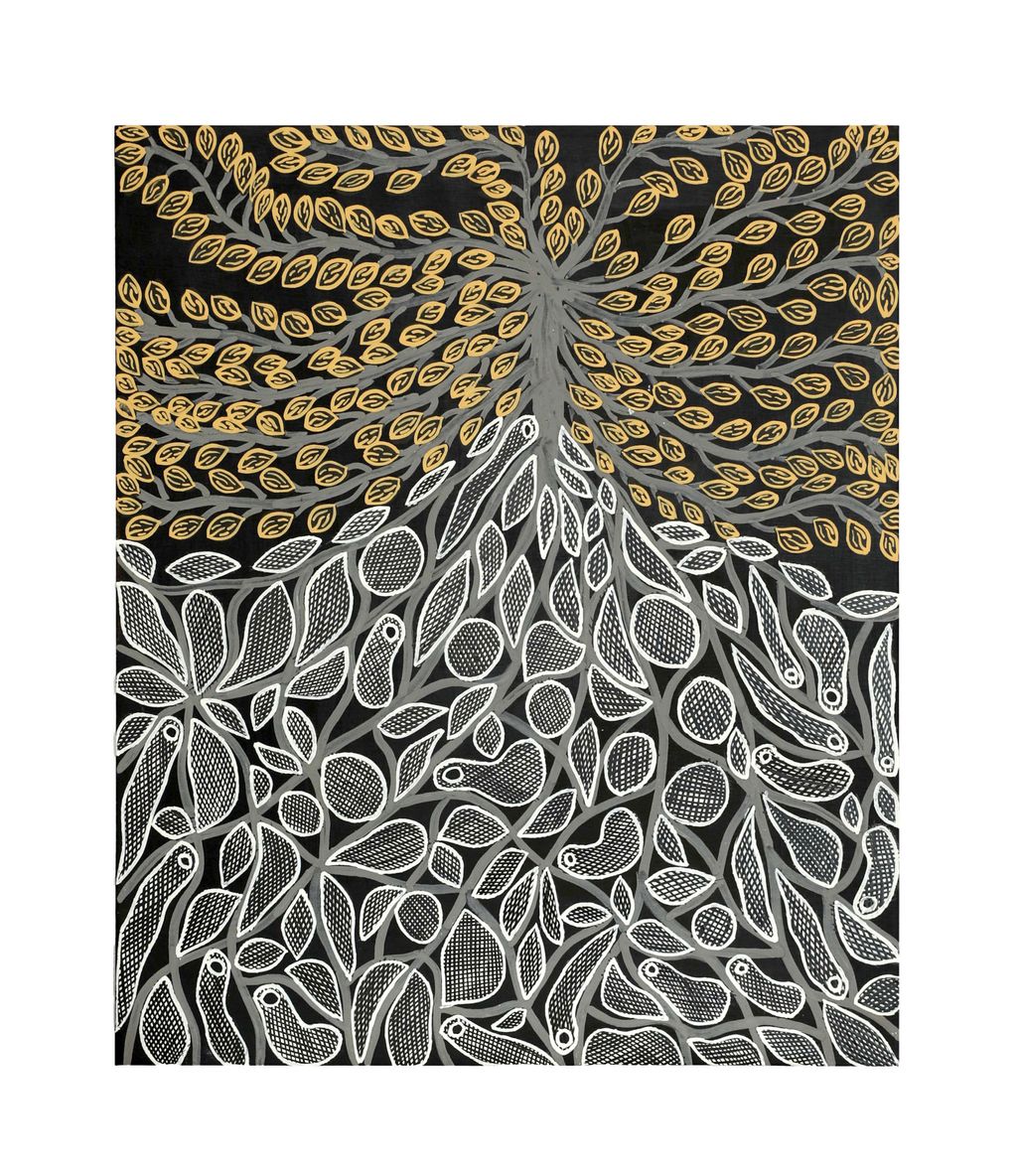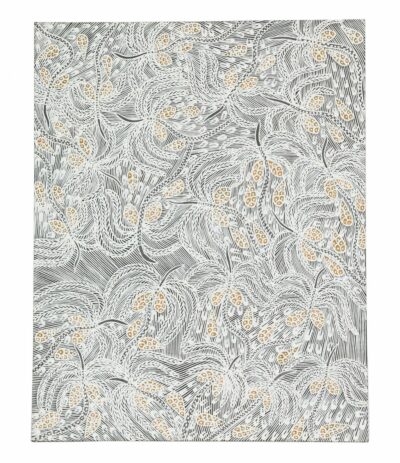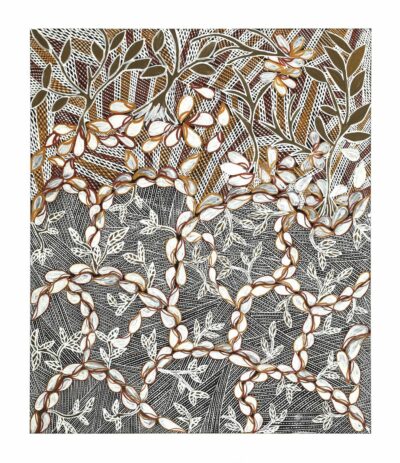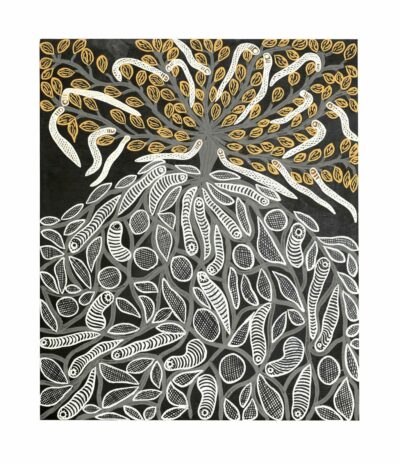Description
muluymuluy wirrpanda
Earth Pigments on board
61 x 51 cm
Year: 2022
ID: 8434-22
Gathul
This work was included in a show at Cross Art projects in late 2023 called Gathul-gärri Into the Mangroves
This is an essay that accompanied the exhibition;
Gathul-gärri /Into the Mangroves
This exhibition is an invitation to enter the mangroves.
It is a loaded invitation.
Not to ‘go’ to the mangroves, but to ‘enter’ them.
Words can’t describe the intensity of the sunlight in Arnhem Land. In places like Sydney the Sun hits at a glancing blow, but at the Equator it is a direct hit. The light is so bright it feels like a sound ringing in your ears, drilling through your eyes.
Those eyes are permanently squinted. Your view is always squashed. To try and stop the light from burning a hole in your mind.
And then BANG! You step through a gap in the fringe and the temperature plunges. The clamour of the light is silenced and you realise you can open your eyes.
But at first you are blind. Just like stepping from bright sunlight through the door of a medieval church.
Once you do adjust, your eyes can’t quite believe what they are seeing! The intricacy of the buttressed shapes arcing away into infinity, support an endless colonnade of pillars. These columns are what is holding up the darkness.
In other places mangrove ‘swamps’ are what cling to the edges of industrial storm drains or overused dog parks. They have often been so misused that you can see through the straggle of trees to the built landscape beyond. Where they are thick enough to conceive of entering them they are used as rubbish dumps with broken glass and tyres growing in the mud.
But in Arnhem Land they are cathedrals. Rich smells and the clicking music of hidden life.
Harvesting the fruits of the mangrove is the particular obsession of Yolŋu women. Their knowledge of what lies within and under the trees and the mud is incredible. For, as beautiful as what can be seen is, there is hidden treasure everywhere, for those who can crack the code.
One example only of the hundreds of delicious foods on offer is Dhän’pala. The King, or more likely Queen, of Shellfish in East Arnhem is one that sustains many people and anchors many hunting trips. Found by feeling with feet or combing with hands, knife blades or rakes or sometimes spotted as cryptic lips just poking free of the mud or as a hole or crack in the surface of the mud indicating a subsidence below where she has moved.
It is a fist-sized clam with many names. The typically ugly English common name is Mud Mussel Geloina oviformis, , (previous scientific names Gelonia coaxans, Polymesoda erosa). Also known in Yolŋu matha as Dhäkururru, Räwiya, Rruŋundhaŋaniŋ, Yiwaḻkurr, Yuwaḻkurr. Rägudha. Rägudha means kneecap. This maypal (shellfish) belongs to the Dhuwa half of the world.
The group will emerge from the forest following ancient opathways with hundreds and hundreds of shells in buckets, bags and pockets. And then the feats will begin.
There is a technique where a small fire is constructed using specially chosen size and type of kindling around a stacked pyramid of Dhän’pala so that lighting one match will cook and open as many as thirty at a time.
Hidden aside these treasures are Djiny’djalma or Nyuka. Appetisingly named Mud Crabs by English speakers. Yolŋu women trek for kilometres atop the network of buttress roots anchoring the mangrove forest in the sweet black mud. There is a rhythm to the mud which a buried mud crab disturbs. Their holes, which are often wedged into hidden sections beneath the trees, are visible only to the trained eye. Then begins the task of extricating the crab with massive vice like pincers, from their deep dark wet hole usually with bare hands!
During 2022 Muluymuluy was burdened with a lot of ceremonial duty in the homelands. When she returned to Yirrkala the bark season had finished. She ended up using offcut boards and embarked on a theme of mangroves. Since then she has continued painting mangroves on bark as well. It should be understood that these paintings are not still lifes. They are an ode to the activity of being within this magic world.
Each work is unique and derives from different themes. From the trees themselves, and their roots and the seeds, to an esoteric reference to the endless list of shellfish which the knowledgeable can find such as warrapal, dhuṉ’ku or bunybu.
Muluymuluy is the younger sister of famed artist Ms. M. Wirrpanda who collaborated with her adopted wawa (or classificatory brother) John Wolseley for over a decade before her death in early 2021. She was a passionate champion of Yolŋu ecological knowledge including a particular interest in illuminating the myriad of edible shellfish found in the waters, beaches, floodplains and mangroves of Arnhem Land. Her poles in this show are a standout example of this genre.






Reviews
There are no reviews yet.